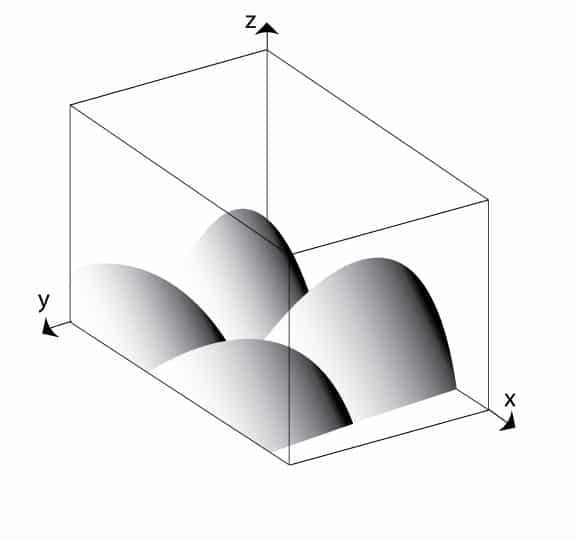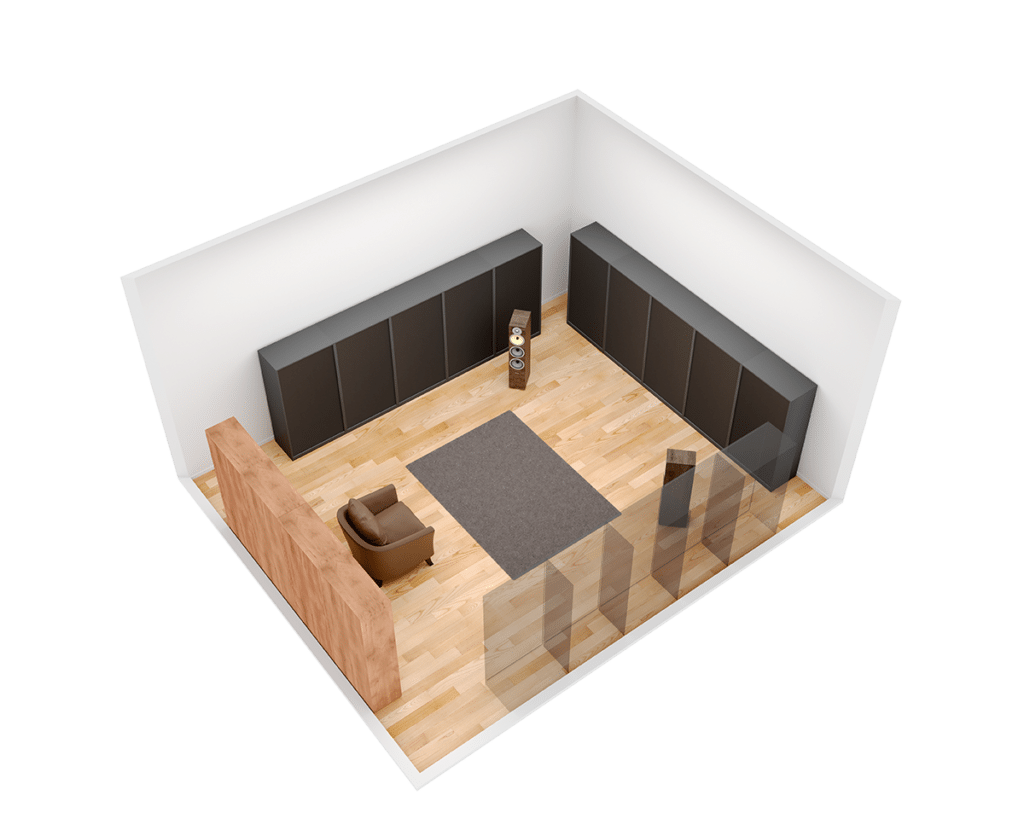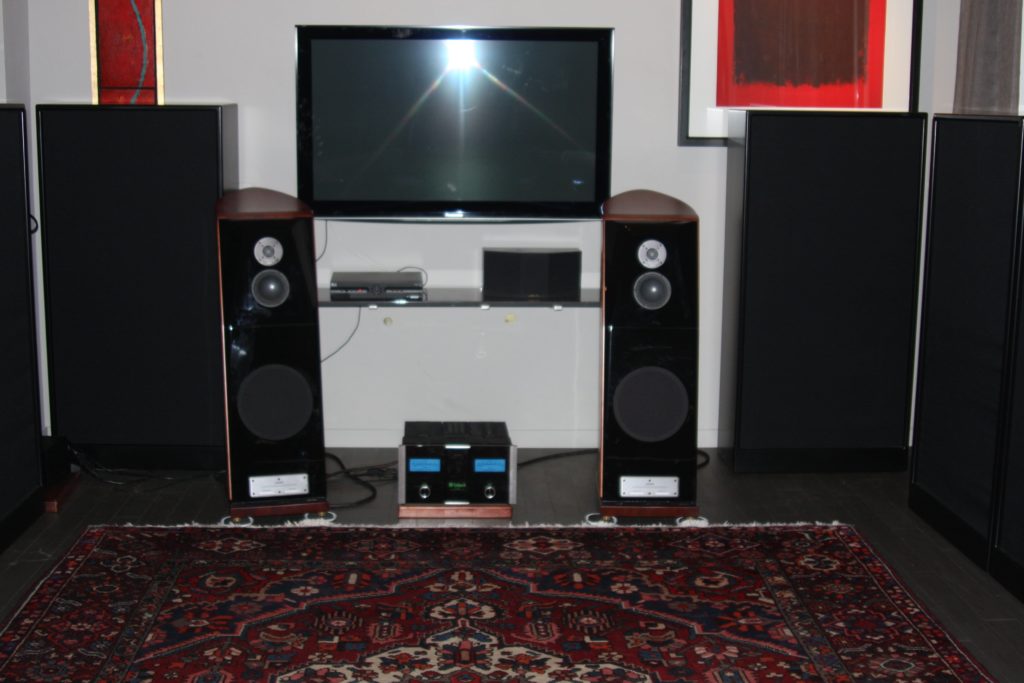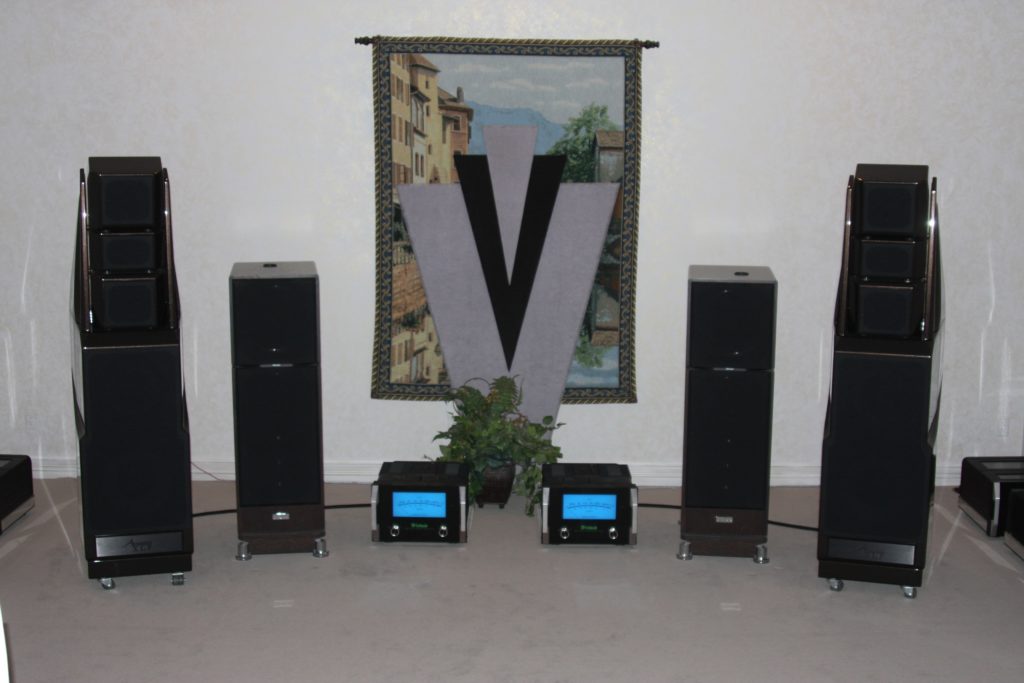This blog has been updated from it original posting to reflect new information and changes in technology regarding two channel speakers. Updated on 11/26/19.
The time has come where you must set up your two-channel speakers and select the listening position to form a system in your room. You must decide where to place your speakers and electronics and you do not know where to start. You must be careful in choosing convenience in location over performance requirements with your room. I am certain you paid a lot for your equipment to produce the music you desire and every watt costs money and you want to make sure you position all components in the correct position to minimize any harmful room effects. Where do we start? We start at the bottom.
Two Channel Speakers & Room Sound
First, you need to know more about your room. You have two sound-producing devices you must deal with. Obviously, you have your two-channel system with its speakers, source material, and amplifier. However, there is also another player in the deal and it is your room and the sound it produces sound. Yes, your room has a sound of its own and it is your job to minimize its sound through proper equipment placement and proper room acoustic treatment. Without addressing the room sound, you can own the finest equipment in the world, capable of producing every nuance in the recording, but your room will simply not let you hear everything or create issues where you can hear too much. You have a two-channel speaker system but are they the correct speakers for your room.
Low Frequency Impact
How does our room sound? Your room has a sonic signature based on the dimensions of that room. Usually, bigger is better, but only to a point. Larger rooms with big volumes create their own set of issues. There are ratios of room sizes that have already been measured to minimize room sound, but most of us must deal with the room we are given and do not have the luxury of knocking out walls to conform to some “golden ratio”. To understand room sound, you must start with the room’s impact on low frequencies. This is all about room modes.

Room Mode Pressure
Room Mode Hunting
To find out how low-frequency energy behaves in your room, you will need to introduce low-frequency energy into your room and then measure how the room reacts to the pressure. One way to do this is to use a tone generator to generate low frequencies through your speaker system into the room. Once you generate low frequencies into your room, you can walk around the perimeter of your room and measure their impact at the wall location with a simple handheld sound pressure meter. Each low frequency will impact a different area of the room, so you must walk around and measure every 3′ around the perimeter of the room.

An example of a two-channel listening setup
Mapping Low Frequencies
Once you have the low-frequency issues measured and plotted onto a map, you can begin to see the impact of low-frequency energy in your room. You will see that it impacts many areas and each frequency has a different magnitude of impact in its respective area. These low-frequency areas must be treated first and foremost if you are going to realize the full potential of your system. No matter where you place your speakers and listening position, low-frequency energy will mask other higher frequencies. At the price of hi-fi gear and the cost of speakers today, we want nothing covered up or masked in any way, especially by our room. A two-channel speaker system must be the right size for the room. Not all speakers are for a certain room.
Sound Triangle
Once you have addressed the low-frequency issues with proper low frequency, sound-absorbing technology, you can then begin the task of locating your “sound triangle”. A sound triangle is an equilateral triangle that is formed with your speakers and listening position as the corners of the triangle. It is formed by using equal distances between the left and right channel speakers and the listening position. This “sound triangle” must be treated as a single unit and positioned as a unit. It is composed of two-channel speakers and a listening position. If you have to decrease the distance between the two speakers to fit into your room correctly, then you must decrease the distance from the speakers to the listening position. The “sound triangle” ratios must be honored.
Software Assistance
To find the correct position of your “sound triangle”, there are two ways to go about it. You can use trial and error and set up your “sound triangle” and listen for a while. You can then move your speakers and listening position in small increments and then perform more listening tests. This trial and error procedure can be used, but it is tedious and you may never find the correct location that produces the smoothest frequency response of your room. A better way is to use measurement software to achieve a good starting point and then you can use trial and error to locate positions that satisfy your own hearing and taste requirements. Cara is a good software program that will assist you with the positions for your “sound triangle” that produce the smoothest room frequency response: http://www.cara.de/ENU/index.html
Wizard Measurement Software: https://www.roomeqwizard.com/
Three Step Approach
Locating your speakers and listening position in your room requires a three-step approach. First, you must find the areas of low frequency, excess pressure in your room and plot the locations of this energy build up. Secondly, you must treat the locations of these high-pressure areas with the correct low-frequency, sound-absorbing technology. After treatment, you can use trial and error to find a good location, but to save time it is better to use room analysis software that can give you a starting point to begin from.
In Summary
I hope this explanation helped. Please leave any comments below so I can get back to you. And if you want to learn more about this subject please sign up for our free room acoustic treatment videos and ebook which provide step by step instructions. Get instant access by signing up now.
Thanks
Dennis








If you have control of your listening room as I now have, great. Otherwise you may have the WAF to deal with. (Wife Acceptance Factor, ’nuff said). Prior to moving and now have my own listening room, she would always move my speakers right near the wall. I just gave up and didn’t listen to music seriously Zen for nearly 5 years. At least during that time I have discovered your site and find the information useful. I am an audiophile-buff. Know a lot, worked in a high end store, etc., etc. So, I like the article and am planning my room with your advice in mind. I am trying to get a little bit of my youth back when friends would come over to listen to some tunes on a 5 grand stereo (ref: Dead Kennedys “Holiday in Cambodia”.) Seems like no one in my world wants to do that anymore. Why? (rhetorical) Thanks for letting me speak my mind.
Thanks for your comment Zoe,
No worries. There is nothing like your own dedicated listening room. If is a truly dedicated to audio room, you must be able to manage most low frequency issues and all room boundary reflections. These two processes correctly treated, will produce a new level of sound quality that once heard, will now become your new reference standard.
If you want to fill out this form https://www.acousticfields.com/free-acoustic-treatment-room-analysis-tell-us-about-your-room/ I can take a look at the pressure areas in your room and give you some further advice on positioning.
Thanks and have a great weekend
Dennis